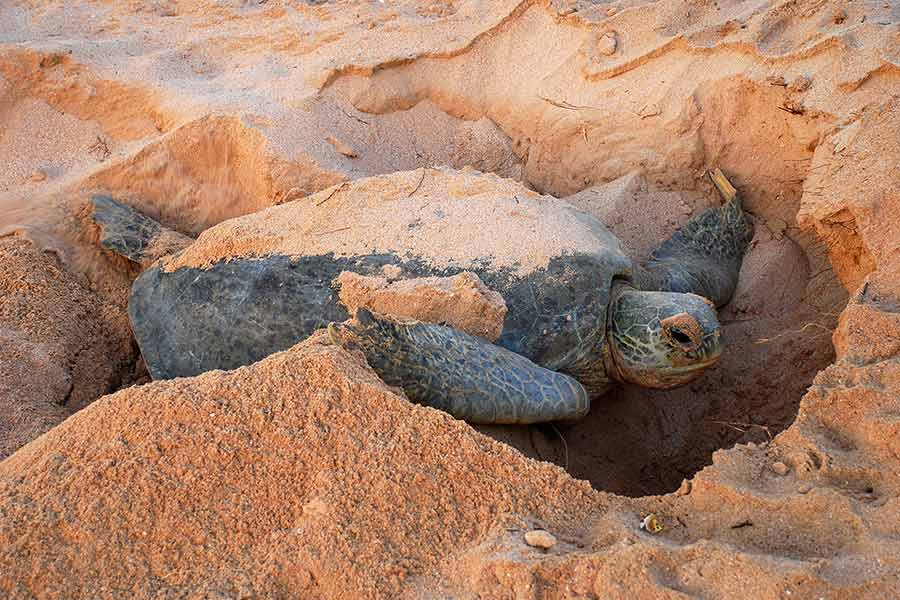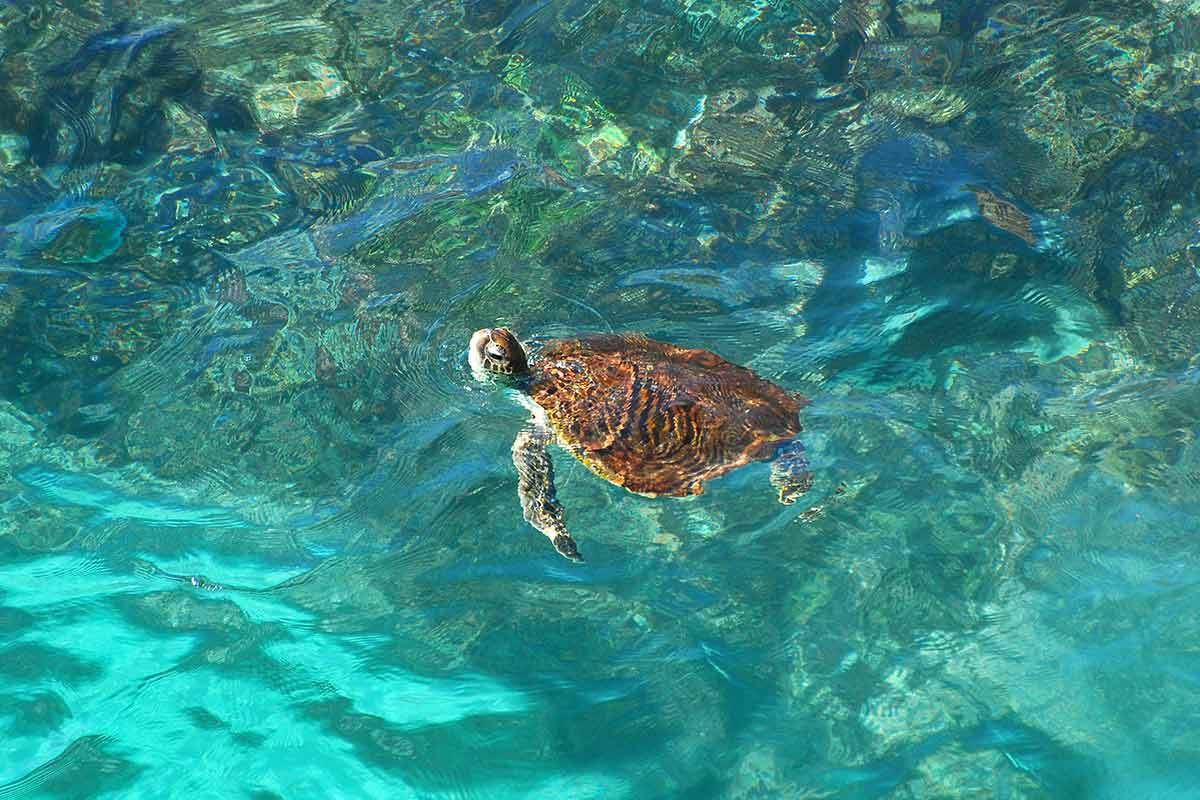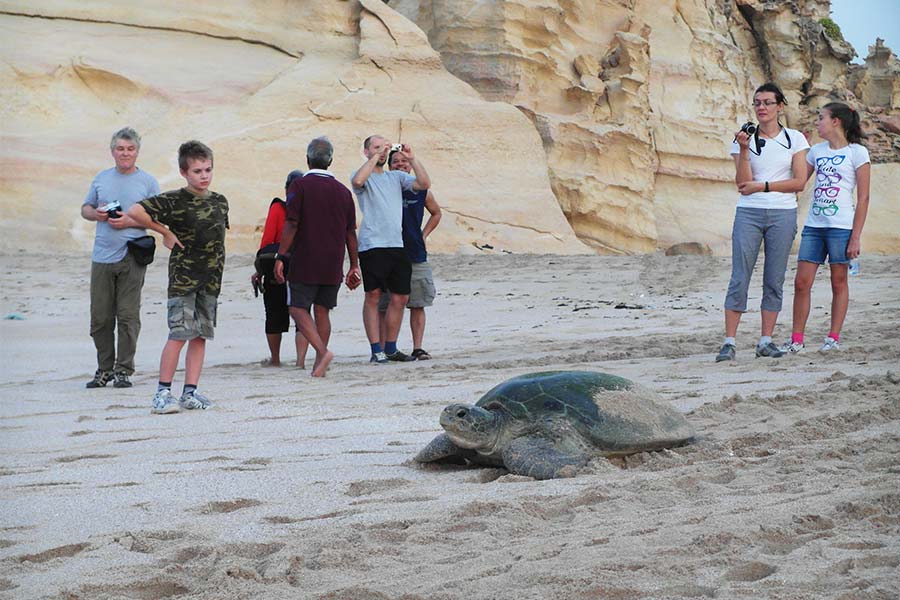Ras Al Jinz is the haven of green turtles which travel thousands of miles to give birth and then return to the place they call home. After laying eggs at Ras Al Jinz, they begin their journey homeward, while the tiny ones slowly hatch out to continue the cycle. Come and visit these incredible beings and know more about their fascinating world.
Ras Al Jinz, located in Ash-Sharqiyyah, is a small sandy bay that is a significant nesting ground for sea turtles from the Indian Ocean. You can reach Ras Al Jinz Turtle Reserve in a three-hour drive from Muscat. From Sur, drive towards Ras Al Hadd. About 40km east, you will find directions towards Ras Al Jinz and turn right at the fork junction (turn left for Ras Al Hadd) to reach Ras Al Jinz Turtle Reserve.

The green sea turtle (Chelonia mydas), or Pacific green turtle, also travels from the shores of the Arabian Gulf and the Red Sea. The principal nesting season for Ras Al Jinz turtles is between May and September. The turtles come all year-round but during the low season, the sightings are few. They migrate long distances between feeding grounds and hatching beaches. At night in the darkness, the female turtles come out into the sand and dig deep holes and lay their eggs. Once the deed is done, they slide back into the sea. After 55 days, the eggs hatch, and the baby turtles start trudging through the sand to the sea in search of their destiny.
A single nest can incubate hundreds of turtle eggs, but despite the huge number of hatchlings, very few are likely to reach adulthood and return to continue this cycle of births. Birds, crabs or foxes often prey on these baby turtles or they get lost in the sea of sand while navigating back. But the lucky ones still manage to reach the sea. Once they survive, they are further endangered by modern fishing methods and plastic waste.

Ras Al Jinz Reserve plays a crucial role in protecting these endangered creatures. You can observe the nesting process through guided tours held by the Ras Al Jinz Centre. The guide makes sure not to disturb the gentle beasts as he guides you with a single torch. It can be quite precarious walking on the squishy sand especially in the dark since you reach there either early in the morning or late at night. So better take a pair of sandals that can carry you through.
Also, set your camera without a flash to take photographs as the lights are likely to disturb the egg-laying turtles and often the baby turtles follow the moonlight. Lights from an external source could disrupt their natural sense of direction and end them up on the wrong path. As you go, be careful not to tread on lost baby turtles in the sand.

There are also other things to do at Ras Al Jinz. You can go diving, kitesurfing, snorkelling, or windsurfing in the nearby Ras Al Hadd lagoon. The best time to visit Ras Al Jinz is from July to September and the turtle beaches in Oman include the adjacent shore of Ras Al Hadd, the Masirah Island and the Daymaniyat Islands in Oman.
Stay at a resort at Ras Al Jinz and enjoy the amber sunset and sunrise on the beautiful beach while watching the gigantic turtles dig patiently with their flippers to nest or drag themselves slowly back into the water. Take a dip and find the waters cool even during the peak of summer. And, if you are in for more games, visit Ras Al Hadd Castle, Dhow factory, and the Sur Maritime Museum on your return journey.
